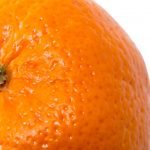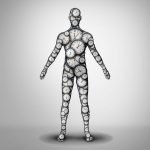The ECS, Cannabis, & Sleep
JAKE F. FELICE, ND, LMP
Sleep is a dynamic and essential activity that involves a multitude of physiologic processes. Proper sleep assists the body with tissue repair, immune maintenance, memory storage, appetite, blood sugar control, blood pressure regulation, process learning, and so much more. Yet nearly half of the adult US population suffers with problems of sleep.1 Unfortunately, sleep disorders lead to chronic illness and increased costs to the healthcare system, and a chronic lack of sleep increases risks of cardiovascular disease, diabetes, and cancers, as well as immune imbalances including increased risk of infectious diseases such as pneumonia.2 After only a few days of sleep restriction, participants in controlled studies showed significant losses in neurocognitive functioning.2
Cannabis for Sleep
The recent explosion of scientific inquiry into the endocannabinoid system (ECS) has generated accumulating evidence that plant cannabinoids, including tetrahydrocannabinol (THC) and cannabidiol (CBD), have favorable subjective effects on sleep quality as well as produce objective changes on polysomnography. This is unsurprising, as the ECS is intimately involved in nearly all aspects of homeostasis and it functions as a self-regulating harm-reduction system.3 The ECS consists of cannabinoid receptors CB1 and CB2, endogenous ligands such as the endocannabinoids anandamide (AEA) and 2-arachidonoylglycerol (2-AG) and their transport mechanisms, and endocannabinoid-metabolizing enzymes. The ECS profoundly influences a plethora of physiologic processes, in the human body and in almost all other animals.
The usefulness of cannabis for sleep necessitates a comparison with its pharmacologic alternatives. Prescription drugs for sleep are associated with significant risks of dangerous drug interactions, as well as other side effects including withdrawal-insomnia.4 Most hypnotics are usually prescribed without valid indications, and even when indicated, they frequently produce little or no benefit and generally make patients sleepier the next day.5 Hypnotic medications are associated with substantially increased risk of all-cause mortality.5
A recent study comparing prescription records with medical examiner data showed that 76% of overdose patients had benzodiazepine prescriptions and 25% had a prescription for zolpidem.5 Even when fewer than 18 pills per year are prescribed, hypnotics have been associated with a greater than 3-fold increase in the risk of death.5 Benzodiazepines are involved in increasing numbers of emergency department visits.5 The frequency of unwanted and dangerous side-effects of conventional sleep agents results in dissatisfaction rates approaching 50%.4–7
Although no medication is risk-free, cannabis has a remarkably low toxicity profile. It is estimated that the average human would have to smoke the equivalent of 2000 to 4000 joints in 15 minutes to be fatal.8 This number translates to over 624 kg of cannabis inhaled in 15 minutes.8 The therapeutic ratio for commonly prescribed drugs is defined as the ratio of an effective dose compared to a toxic dose. The therapeutic ratio for many medications is 1:10, while the ratio for relatively low-toxic aspirin is 1:20. The therapeutic ratio for cannabis lies somewhere between 1:20 000 and 1:40 000, which is magnitudes lower than the toxicity for the vast majority of medications in the US pharmacopeia.8 Rates of cannabis dependence are more similar to those of coffee than of sedatives or alcohol, and cannabis withdrawal symptoms are typically limited to insomnia, anxiety, and sweating.9
With large numbers of patients using hemp, CBD, and THC-based products, it is important for clinicians to understand how plant cannabinoids affect sleep via the ECS. Knowing how the ECS functions under normal and pathologic conditions can provide clinicians with insights into sleep disorders, giving us windows into understanding how low-toxic approaches can improve sleep and sleep disturbances. Like any pharmacologic product intended for sleep, cannabis is far from perfect. However, due to its generally acceptable side-effect profile and extremely low toxicity, cannabis-based sleep aids can give clinicians an effective tool to address short-term sleeplessness.
This review highlights the potential of the ECS and cannabinergic therapy for sleep. At this time, the evidence shows great promise, though it remains in its infancy.
Sleep Studies & Botanical Synergy in Cannabis
It is well known that cannabis products are not uniform and that countless variations and product types exist. Interestingly, due to variations in plant genetics and the environments in which they are grown, the cannabis plant produces products with considerably different chemical profiles.10 Studies suggest that utilization of isolated cannabinoids yields different experimental results compared to using whole plant. For example, whole-plant THC has been shown to have 2-4 times greater effect than THC isolate without the presence of other molecules in the plant.11
Unfortunately, the vast majority of sleep studies have examined only purified THC isolates, CBD isolates, or whole-plant cannabinoid preparations whose cannabinoid profiles have not been measured.12 Additionally, most studies on the sleep-promoting properties of cannabis have focused on either isolated THC or high-THC cannabis products12 rather than on CBD or other cannabinoids or terpenes that have known pharmacologic and pharmacokinetic effects.
Therefore, it goes without saying that the ideal scientific study of cannabis use in humans necessitates study designs based on an understanding of which botanical compounds are actually contained in the plants being used for experimental purposes. Unfortunately, few modern researchers are trained to develop experimental designs that accommodate this reality.
ECS & Sleep
ECS action influences sleep in multiple locations within the brain as well as in the periphery.12 Manipulations of the ECS alter sleep in terms of the time spent in various states of vigilance, as well as their effects on distinct sleep-linked brain rhythms and neurologically-related sleep architecture. For example, the endocannabinoid AEA promotes sleep when administered systemically.13-16 As well, other studies show that AEA uptake inhibitors and precursors reduce wakefulness and potentiate sleep.17-19 In a rat study, AEA circulation in cerebrospinal fluid demonstrated diurnal occilations.20 Additionally, in neural tissue, endocannabinoid signaling molecules exhibit brain region-specific circadian rhythms,21 and recent animal studies suggest that fluctuations in these molecules may influence internal circadian rhythms.22-24 In rats, AEA fluctuations in the pons were shown to correlated with sleep/wake cycles.20 At this early stage, the complex role of endocannabinoids in sleep warrants further clarification.
Cannabinoid Sleep Studies
The effectiveness of cannabis as a sleep aid has been described in the western medical literature since western scientists “discovered” its therapeutic properties in the 19th century after their encounters with traditional healers during the British colonization of India.25-28
In the modern era, experimental evidence for cannabis as a sleep aid began accumulating in the 1970s. Studies have suggested that THC increases slow-wave sleep while reducing rapid eye movement (REM) sleep, sleep onset latency, and waking after sleep.29,30
Studies of THC and/or CBD in multiple Phase I-III studies, including nearly 2000 subjects with 1000 patient years of exposure, have shown significant subjective improvements in sleep parameters in a wide variety of pain conditions, including intractable cancer pain, peripheral neuropathic pain, multiple sclerosis, and rheumatoid arthritis. All of these studies demonstrated an acceptable adverse-event profile.31
A 2008 review describes how both THC and inhaled cannabis helped with falling asleep and increasing the amount of time spent in Stage 4 sleep. Oral THC isolate was also found to reduce the time spent in REM sleep.32
A more recent review (2017) on cannabis, cannabinoids, and sleep suggests therapeutic potential for CBD in the treatment of insomnia, while THC may reduce the length of time to transition from full wakefulness to sleep.33 Importantly, this review also found that THC may impair sleep when used long-term.33
Long-term cannabis use can produce tolerance to its effects, including for sleep.29,34-38 Cannabis withdrawal can also disrupt sleep patterns,36,39-42 as a major problem with cannabis withdrawal includes altered sleep patterns; this can be observed in most cannabis users attempting to quit.33,43 Importantly, these features can lead to relapses following cannabis abstinence.40,41,44 Many patients attempting to quit cannabis cite sleep as a major reason for going back to cannabis use.37,43,45,46
It is well known that rebound insomnia can occur with almost any prescription sleep aid, also that sleep medications that impact sleep architecture have a high potential to affect the quality of normal sleep.47-50 Interestingly, a survey of 1500 cannabis patients showed that 76.7% of respondents were able to reduce their use of prescription sleep aids with cannabis.51 As mentioned above, a major benefit of cannabis as a sleep aid lies in its ultra-low toxicity. This enables patients to reduce potential harm from more toxic sleep medications such as hypnotics and benzodiazepines. As a clinician, this author has frequently seen large numbers of long-term medical cannabis patients successfully utilize CBD-dominant cannabis (<0.3% THC content) for treating THC-withdrawal insomnia.
CBD Sleep Studies
Interestingly, despite a growing body of evidence showing the sleep efficacy of CBD products, CBD isolate by itself appears to be a wake-inducing agent.52 In contrast, studies show that CBD products containing whole-plant cannabis effectively promote sleepiness.53 The sleep inducing effects of CBD-dominant cannabis may very well be due to additive and synergistic effects from the small amounts of THC contained in these products, as well as other cannabinoids and bioavailable terpenes in these preparations.53 In one long-term retrospective case series, patients using CBD in hemp-based products reported improved sleep.54 Surprisingly, many “full-spectrum” hemp-based CBD products may still contain enough THC to have clinical significance.55
Another study, which examined the effects of a low-dose 1:1 ratio of THC and CBD on sleep in pain-related insomnia patients, reported enhanced sleep without any evidence tolerance development.31
Many available cannabis formulations certainly support sleep; however, because of their distinct chemical compositions, some formulations may not support sleep. It is unfortunate that most study designs do not keep this in mind during the design phase of cannabis studies.
Pain, PTSD & Sleep
The primary goals of quality sleep include both increasing the quantity of sleep and enhancing daytime functioning. A fairly large and growing body of evidence indicates that cannabis offers relief for pain patients having trouble with sleep,56-60 as well as for PTSD patients with poor-quality sleep.61-65 Of particular note for pain patients, the use of cannabis as a treatment for pain has the added advantage of potentially enhancing mood and daily functioning.66 A 2019 cross-sectional study of older adults with chronic pain and insomnia concluded that, despite the potential development of tolerance, cannabis use may have an efficacious impact on maintaining sleep throughout the night.67
Recent evidence demonstrates the role of the ECS and cannabinoids in the extinction of fear-based memories in PTSD.68 Additionally, a recent systemic review examining cannabis and PTSD concluded that, although further investigations should be conducted, cannabis reduces PTSD-related insomnia and night terrors.69 In a rat study, modulation of the ECS was shown to influence how emotions are stored in memory, suggesting that ECS-altering agents may be helpful complements to cognitive therapy for PTSD.70
A number of psychiatric disorders, including PTSD, involve poor adaptation to environmental conditions as well as atypical memory processing at the CB1 receptor.71 A 2013 study suggests that abnormal AEA signaling, mediated by CB1 receptors, is involved in PTSD. This research now provides scientists an evidenced-based model with which to approach this condition.72 Through modulation of memory processing, cannabinergic therapies may decrease the formation and entrenchment of traumatic memories as well as improve sleep.68
ECS networks in the hypothalamus and amygdala indicate the importance of the ECS in the body’s responses to stress and memory, allowing the unique inhibitory circuits of the ECS to forget or deprioritize the entrenchment of trauma and the recall of traumatic memories.69,73
The ECS & Jetlag
One approach to sleep that clinicians should be aware of is the potential for cannabinoids to alter diurnal sleep rhythms. Cannabis may be used as a zeitgeber, acting to reset the body’s circadian rhythyms23,24,74; ie, it represents a possible chrono-biotic treatment for jetlag.75 The authors of this review suggest that “precise administration of these (cannabinoid) compounds may bidirectionally entrain central and peripheral circadian clocks and benefit multiple aspects of aging physiology.”75
Summary
Cannabis and cannabinoids offer clinicians safe and effective low-toxic solutions for short-term sleep issues. Evidence points to particular efficacy and usefulness for patients with pain and/or PTSD with concomitant sleep issues. Cannabis is generally well tolerated and, though its side-effect profile is very favorable, like most sleep medications, a common side-effect of long-term cannabis use in some patients is rebound insomnia. In addition to utilizing cannabinoid-based, botanically-derived molecules to influence sleep, the body’s own ECS offers potential insight into how various current and future non-cannabinoid-based CAM therapies may potentially benefit sleep through their actions and influence on the endocannabinoid system.
References:
- Vigil JM, Stith SS, Diviant JP, et al. Effectiveness of Raw, Natural Medical Cannabis Flower for Treating Insomnia under Naturalistic Conditions. Medicines (Basel). 2018;5(3):75.
- Ramar K, Olson EJ. Management of common sleep disorders. Am Fam Physician. 2013;88(4):231-238.
- Felice JF. The Endocannabinoid System: Self-Regulating Harm Protection. NDNR. 2018;14(7):1.
- Morin CM, Benca R. Chronic insomnia. Lancet. 2012;379(9821):1129-1141.
- Kripke DF. Hypnotic drug risks of mortality, infection, depression, and cancer: but lack of benefit. F1000Res. 2016;5:118.
- Fitzgerald T, Vietri J. Residual Effects of Sleep Medications Are Commonly Reported and Associated with Impaired Patient-Reported Outcomes among Insomnia Patients in the United States. Sleep Disord. 2015;2015:607148.
- Chung S, Youn S, Yi K, et al. Sleeping pill administration time and patient subjective satisfaction. J Clin Sleep Med. 2016;12(1):57-62.
- Carter GT, Weydt P, Kyashna-Tocha M, Abrams DI. Medicinal cannabis: rational guidelines for dosing. IDrugs. 2004;7(5):464-470.
- Kendler KS, Myers J, Prescott CA. Specificity of genetic and environmental risk factors for symptoms of cannabis, cocaine, alcohol, caffeine, and nicotine dependence. Arch Gen Psychiatry. 2007;64(11):1313-1320.
- Russo EB. Taming THC: potential cannabis synergy and phytocannabinoid-terpenoid entourage effects. Br J Pharmacol. 2011;163(7):1344-1364.
- Carlini EA, Karniol IG, Renault PF, Schuster CR. Effects of marihuana in laboratory animals and in man.. Br J Pharmacol. 1974;50(2):299-309.
- Kesner AJ, Lovinger DM. Cannabinoids, Endocannabinoids and Sleep. Front Mol Neurosci. 2020;13:125.
- Mechoulam R, Fride E, Hanus L, et al. Anandamide may mediate sleep induction. Nature. 1997;389(6646):25-26.
- Murillo-Rodríguez E, Sánchez-Alavez M, Navarro L, et al. Anandamide modulates sleep and memory in rats. Brain Res. 1998;812(1-2):270-274.
- Murillo-Rodríguez E, Cabeza R, Méndez-Díaz M, et al. Anandamide-induced sleep is blocked by SRI41716A, a CBI receptor antagonist and by U73122, a phospholipase C inhibitor. Neuroreport. 2001;12(10):2131-2136.
- Murillo-Rodriguez E, Blanco-Centurion C, Sanchez C, et al. Anandamide enhances extracellular levels of adenosine and induces sleep: An in vivo microdialysis study. Sleep. 2003;26(8):943-947.
- Murillo-Rodríguez E, Millán-Aldaco D, Palomero-Rivero M, et al. The Nonpsychoactive Cannabis Constituent Cannabidiol Is a Wake-Inducing Agent. Behav Neurosci. 2008;122(6):1378-1382.
- Murillo-Rodríguez E, Millán-Aldaco D, Di Marzo V, Drucker-Colín R. The anandamide membrane transporter inhibitor, VDM-11, modulates sleep and c-Fos expression in the rat brain. Neuroscience. 2008;157(1):1-11.
- Murillo-Rodríguez E, Machado S, Rocha NB, et al. Revealing the role of the endocannabinoid system modulators, SR141716A, URB597 and VDM-11, in sleep homeostasis. Neuroscience. 2016;339:433-449.
- Murillo-Rodriguez E, Désarnaud F, Prospéro-García O. Diurnal variation of arachidonoylethanolamine, palmitoylethanolamide and oleoylethanolamide in the brain of the rat. Life Sci. 2006;79(1):30-37.
- Vaughn LK, Denning G, Stuhr KL, et al. Endocannabinoid signalling: Has it got rhythm? Br J Pharmacol. 2010;160(3):530-543.
- Perron RR, Tyson RL, Sutherland GR. Δ9-Tetrahydrocannabinol increases brain temperature and inverts circadian rhythms. Neuroreport. 2001;12(17):3791-3794.
- Sanford AE, Castillo E, Gannon RL. Cannabinoids and hamster circadian activity rhythms. Brain Res. 2008;1222:141-148.
- Acuna-Goycolea C, Obrietan K, Van Den Pol AN. Cannabinoids excite circadian clock neurons. J Neurosci. 2010;30(30):10061-10066.
- Clendinning J. Observations on the Medicinal Properties of the Cannabis Sativa of India. J R Soc Med. 1843;26:188-210.
- Bradbury JB. The croonian lectures on some points connected with sleep, sleeplessness, and hypnotics. Br Med J. 1899;2(2011):134-138.
- On the Preparations of the Indian Hemp, or Gunjah (Cannabis Indica), Their Effects on the Animal System in Health, and Their Utility in the Treatment of Tetanus and Other Convulsive Diseases. Br Foreign Med Rev. 1840;10(19):225-228.
- Wallich GC. Cannabis indica. Br Med J. 1883;1(1173):1224.
- Barratt ES, Beaver W, White R. The effects of marijuana on human sleep patterns. Biol Psychiatry. 1974;8(1):47-54.
- Masur J, Khazan N. Induction by cannabis sativa (marihuana) of rhythmic spike discharges overriding rem sleep electrocorticogram in the rat. Life Sci. 1970;9(22):1275-1280.
- Russo EB, Guy GW, Robson PJ. Cannabis, pain, and sleep: Lessons from therapeutic clinical trials of sativexρ, a cannabis-based medicine. Chem Biodivers. 2007;4(8):1729-1743.
- Schierenbeck T, Riemann D, Berger M, Hornyak M. Effect of illicit recreational drugs upon sleep: Cocaine, ecstasy and marijuana. Sleep Med Rev. 2008;12(5):381-389.
- Babson KA, Sottile J, Morabito D. Cannabis, Cannabinoids, and Sleep: a Review of the Literature. Curr Psychiatry Rep. 2017;19(4):23.
- Pranikoff K, Karacan I, Larson EA, et al. Effects of marijuana smoking on the sleep EEG. Preliminary studies. JFMA. 1973;60(3):28-31.
- Feinberg I, Jones R, Walker JM, et al. Effects of high dosage delta-g-tetrahydrocannabinol on sleep patterns in man. Clin Pharmacol Ther. 1975;17(4):458-466.
- Karacan I, Fernández‐Salas A, Coggins WJ, et al. Sleep electroencephalographic-electrooculographic characteristics of chronic marijuana users: part I. Ann N Y Acad Sci. 1976;282(1):348-374.
- Levin KH, Copersino ML, Heishman SJ, et al. Cannabis withdrawal symptoms in non-treatment-seeking adult cannabis smokers. Drug Alcohol Depend. 2010;111(1-2):120-127.
- Halikas JA, Weller RA, Morse CL, Hoffmann RG. A longitudinal study of marijuana effects. Subst Use Misuse. 1985;20(5):701-711.
- Vandrey R, Smith MT, McCann UD, et al. Sleep disturbance and the effects of extended-release zolpidem during cannabis withdrawal. Drug Alcohol Depend. 2011;117(1):38-44.
- Bolla KI, Lesage SR, Gamaldo CE, et al. Polysomnogram changes in marijuana users who report sleep disturbances during prior abstinence. Sleep Med. 2010;11(9):882-889.
- Bolla KI, Lesage SR, Gamaldo CE, et al. Sleep disturbance in heavy marijuana users. Sleep. 2008;31(6):901-908.
- Angarita GA, Emadi N, Hodges S, Morgan PT. Sleep abnormalities associated with alcohol, cannabis, cocaine, and opiate use: A comprehensive review. Addict Sci Clin Pract. 2016;11(1):9.
- Babson KA, Boden MT, Harris AH, et al. Poor sleep quality as a risk factor for lapse following a cannabis quit attempt. J Subst Abuse Treat. 2013;44(4):438-443.
- Suraev A, Grunstein RR, Marshall NS, et al. Cannabidiol (CBD) and δ9-tetrahydrocannabinol (THC) for chronic insomnia disorder (‘CANSLEEP’ trial): Protocol for a randomised, placebo-controlled, double-blinded, proof-of-concept trial. BMJ Open. 2020;10(5):e034421.
- Babson KA, Boden MT, Bonn-Miller MO. The impact of perceived sleep quality and sleep efficiency/duration on cannabis use during a self-guided quit attempt. Addict Behav. 2013;38(11):2707-2713.
- Copersino ML, Boyd SJ, Tashkin DP, et al. Cannabis withdrawal among non-treatment-seeking adult cannabis users. Am J Addict. 2006;15(1):8-14.
- Roehrs T, Roth T. Drug-related sleep stage changes: Functional significance and clinical relevance. Sleep Med Clin. 2010;5(4):559-570.
- Roehrs T, Roth T. The effects of medications on sleep quality and sleep architecture. Last updated September 18, 2020. UpToDate Web site. Available at: https://www.uptodate.com/contents/the-effects-of-medications-on-sleep-quality-and-sleep-architecture. Accessed January 6, 2021.
- Sleep Foundation. Side Effects of Sleep Medications. Last updated September 3, 2020. Available at: https://www.sleepfoundation.org/sleep-medications/side-effects. Accessed January 6, 2021.
- WebMD. Understanding the Side Effects of Sleeping Pills. Reviewed October 26, 2020. Available at: https://www.webmd.com/sleep-disorders/understanding-the-side-effects-of-sleeping-pills. Accessed January 6, 2021.
- Piper BJ, Dekeuster RM, Beals ML, et al. Substitution of medical cannabis for pharmaceutical agents for pain, anxiety, and sleep. J Psychopharmacol. 2017;31(5):569-575.
- Nicholson AN, Turner C, Stone BM, Robson PJ. Effect of Δ-9-tetrahydrocannabinol and cannabidiol on nocturnal sleep and early-morning behavior in young adults. J Clin Psychopharmacol. 2004;24(3):305-313.
- Spindle TR, Cone EJ, Goffi E, et al. Pharmacodynamic effects of vaporized and oral cannabidiol (CBD) and vaporized CBD-dominant cannabis in infrequent cannabis users. Drug Alcohol Depend. 2020;211:107937.
- Shannon S, Lewis N, Lee H, Hughes S. Cannabidiol in Anxiety and Sleep: A Large Case Series. Perm J. 2019;23:18-041.
- Almog S, Aharon-Peretz J, Vulfsons S, et al. The pharmacokinetics, efficacy, and safety of a novel selective-dose cannabis inhaler in patients with chronic pain: A randomized, double-blinded, placebo-controlled trial. Eur J Pain. 2020;24(8):1505-1516.
- Lynch ME, Clark AJ. Cannabis reduces opioid dose in the treatment of chronic non-cancer pain. J Pain Symptom Manage. 2003;25(6):496-498.
- Berman JS, Symonds C, Birch R. Efficacy of two cannabis based medicinal extracts for relief of central neuropathic pain from brachial plexus avulsion: Results of a randomised controlled trial. Pain. 2004;112(3):299-306.
- Blake DR, Robson P, Ho M, et al. Preliminary assessment of the efficacy, tolerability and safety of a cannabis-based medicine (Sativex) in the treatment of pain caused by rheumatoid arthritis. Rheumatology. 2006;45(1):50-52.
- Ware MA, Fitzcharles MA, Joseph L, Shir Y. The effects of nabilone on sleep in fibromyalgia: Results of a randomized controlled trial. Anesth Analg. 2010;110(2):604-610.
- Ware MA, Wang T, Shapiro S, et al. Smoked cannabis for chronic neuropathic pain: A randomized controlled trial. CMAJ. 2010;182(14):E694-E701.
- Bonn-Miller MO, Babson KA, Vandrey R. Using cannabis to help you sleep: Heightened frequency of medical cannabis use among those with PTSD. Drug Alcohol Depend. 2014;136(1):162-165.
- Bonn-Miller MO, Pollack CV, Casarett D, et al. Priority Considerations for Medicinal Cannabis-Related Research. Cannabis Cannabinoid Res. 2019;4(3):139-157.
- Vandrey R, Babson KA, Herrmann ES, Bonn-Miller MO. Interactions between disordered sleep, post-traumatic stress disorder, and substance use disorders. Int Rev Psychiatry. 2014;26(2):237-247.
- Loflin MJ, Babson KA, Bonn-Miller MO. Cannabinoids as therapeutic for PTSD. Curr Opin Psychol. 2017;14:78-83.
- Belendiuk KA, Babson KA, Vandrey R, Bonn-Miller MO. Cannabis species and cannabinoid concentration preference among sleep-disturbed medicinal cannabis users. Addict Behav. 2015;50:178-181.
- Ellis RJ, Toperoff W, Vaida F, et al. Smoked medicinal cannabis for neuropathic pain in HIV: A randomized, crossover clinical trial. Neuropsychopharmacology. 2009;34(3):672-680.
- Sznitman SR, Vulfsons S, Meiri D, Weinstein G. Medical cannabis and insomnia in older adults with chronic pain: A cross-sectional study. BMJ Support Palliat Care. 2020;10(4):415-420.
- Passie T, Emrich HM, Karst M, et al. Mitigation of post-traumatic stress symptoms by Cannabis resin: a review of the clinical and neurobiological evidence. Drug Test Anal. 2012;4(7-8):649-659.
- Hindocha C, Cousijn J, Rall M, Bloomfield MAP. The Effectiveness of Cannabinoids in the Treatment of Posttraumatic Stress Disorder (PTSD): A Systematic Review. J Dual Diagn. 2020;16(1):120-139.
- Chhatwal JP, Davis M, Maguschak KA, Ressler KJ. Enhancing cannabinoid neurotransmission augments the extinction of conditioned fear. Neuropsychopharmacology. 2005;30(3):516-524.
- Lutz B. The endocannabinoid system and extinction learning. Mol Neurobiol. 2007;36(1):92-101.
- Neumeister A, Normandin MD, Pietrzak RH, et al. Elevated brain cannabinoid CB1 receptor availability in post-traumatic stress disorder: A positron emission tomography study. Mol Psychiatry. 2013;18(9):1034-1040.
- Marsicano G, Wotjak CT, Azad SC, et al. The endogenous cannabinoid system controls extinction of aversive memories. Nature. 2002;418(6897):530-534.
- Whitehurst LN, Fogler K, Hall K, et al. The effects of chronic marijuana use on circadian entrainment. Chronobiol Int. 2015;32(4):561-567.
- Hodges EL, Ashpole NM. Aging circadian rhythms and cannabinoids. Neurobiol Aging. 2019;79:110-118.

Jake F. Felice, ND, LMP is a cannabis author, clinician, educator, and consultant whose vision is to advance the science and practical application of cannabis for medical and recreational markets around the world. Dr Felice provides world-class educational experiences by speaking authentically about hemp and cannabis. He consults with healthcare providers, industry, and the general public. His Category 1 CME courses for doctors, nurses, and pharmacists has been translated into 4 languages. Dr Felice is the founder of Cannabis Matrix Consulting, LLC, and he maintains a regular cannabis blog at drjakefelice.com.










